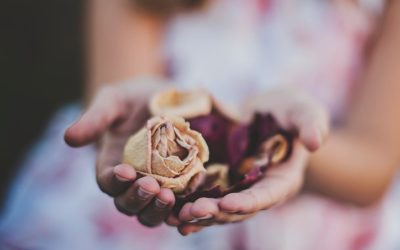Here in America and in most of Canada, we have funeral traditions that have stood the test of time for decades, even centuries.
But our traditions are vastly different from those in other countries and cultures.
This article looks at Taoist funeral traditions and is part of a series that highlights how different cultures care for their dead. Other parts of the series are about Thai funeral traditions and Albanian funeral traditions, among others.
Note, these traditions may vary depending on the individual and their own beliefs.
Preparation of the Body
Family members clean the body with a wet towel dusted with talcum powder. Afterward, they dress the deceased in their nicest clothing, usually something white, black, brown, or blue. But never red because it could cause the deceased’s spirit to become a ghost.
Then, a yellow cloth covers their face and a blue cloth covers their body before putting them in the casket. Mirrors must have coverings so no one sees the deceased’s reflection, as this could cause another death.
A sacred ceremony also takes place before the funeral. A sacred lamp symbolizes the light of wisdom, while two candles symbolize sunlight and moonlight. There’s also tea to symbolize yin, rice to symbolize yang, and water to symbolize Yin and Yang union. Lastly, red, yellow, green, white and black fruit symbolize the five elements: wood, fire, earth, metal, and water. They arrange the fruit on plates and incense burns in the middle.
Taoist Funeral Service
At a Taoist funeral, smells of incense and flowers and photos of the deceased surround the area. The Taoist funeral focuses more on life than death, as they perform rituals to protect the deceased’s spirit from harm.
During the service, a priest chants scriptures while others play drums, symbols, and woodwind instruments. Then, the priest circles a fire where nine tiles rest to represent the levels of the underworld. He waves a sword to ward off evil spirits and breaks the tiles to free the deceased from the underworld. Another priest prays on a lotus flower-shaped seat to symbolize Guan Yin, the Chinese goddess of mercy. Pictures of this goddess often show her sitting on a lotus flower.
Funeral guests also burn joss paper called “ghost money” to free the deceased’s spirit from the underworld. Then, they burn joss paper shaped like houses, servants, clothes, and other objects the deceased may need.
Funeral Feast
After the burial or cremation, there’s a funeral feast with a seat left for the deceased’s spirit. Since the number eight rhymes with the Chinese word meaning good fortune, they serve eight dishes. They eat “sugar water” dessert first, which is a sweet soup, so it’s a sweet and happy celebration.
The other dishes usually contain fish and other meat, but never beef or horsemeat. The underworld “spirit guards” have an ox-like head and a horse-like face, so they don’t want to anger them.
Ward off Evil Spirits
To ward off evil spirits, everyone takes a yellow piece of paper to the funeral. The paper has their name, address, and birthday on it. Then after the funeral, they burn it in their doorway and cross over it while it burns. This prevents any spirits from following them home and bringing bad luck.
Also, during the funeral, everyone needs to be cautious of evil spirits. Whenever the casket is open or people move the body, everyone should turn away or leave. This is especially important for people who have incompatible astrological signs with the deceased.
A Funeral Gift
Funeral attendees give the deceased’s family a white envelope with money to help with funeral payments. However, the money amount should be odd because an even amount means “double happiness.” It also shouldn’t end in nine because it means “long-lasting,” which suggests long-lasting grief.
Along with a money envelope, they also give a funeral gift. However, it should only be one gift because two gifts suggest more than one death. The deceased’s family also gives guests a traditional funeral envelope with a one-dollar coin and fruit candy. This dates to when guests could use the coin to pay for a bus ride home. The fruit candy symbolizes sweetness to get rid of bitterness.
49 Days of Mourning
During the funeral service, everyone mourns as loudly as they wish and wears white clothing. Women may wear a white pointed hood, while men wear a white headband. After the funeral, there’s a 49-day mourning period with prayers said every seven days. During this period, children and grandchildren of the deceased can’t cut their hair.





0 Comments